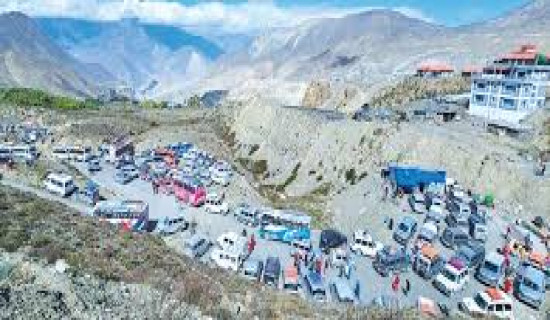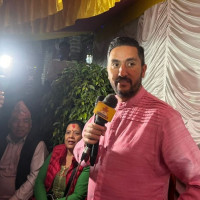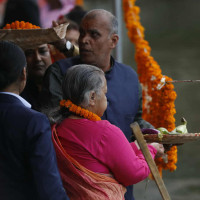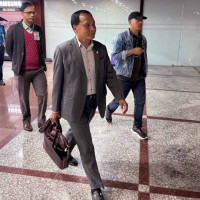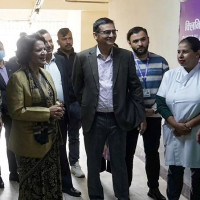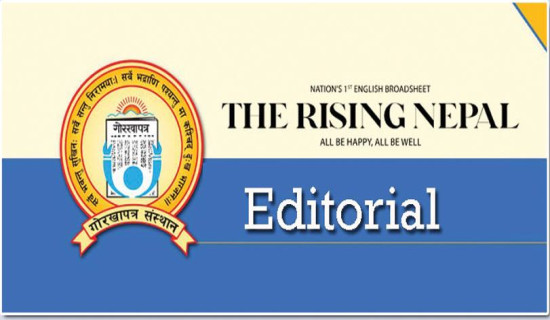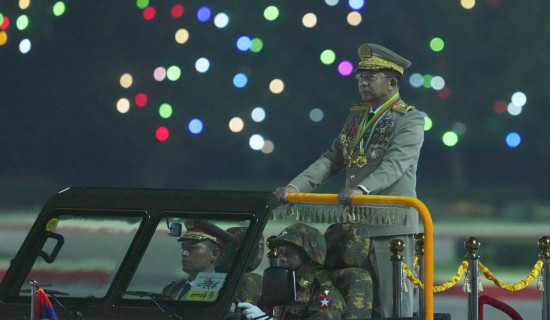- Tuesday, 28 October 2025
Democracy Day Special
Elected Authoritarianism: A Threat To Democracy
As we celebrate Democracy Day, we are reminded of the 1950 Revolution—a historic movement that overthrew the 104-year-long Rana Oligarchy and laid the foundation for a political system based on the will of the people. This revolution marks the turning point in Nepal's political history, symbolising the determined quest of the Nepali people for democracy. It was a milestone in the long struggle of Nepali society for popular sovereignty and freedom, embodied by the representative system of governance.
The 1050 Revolution was the first successful mass-based popular revolt inspired by historical revolutions such as the American Independence movement, the French Revolution, the October Revolution, the Chinese Revolution of 1911, and the Indian Independence movement. Among these revolutions, the American and Indian revolutions were mainly driven by anti-colonial values, while the revolutions in Russia and China were inspired by the ideals of socialist democracy and liberal multi-party democracy, respectively. The objectives of the American and Indian revolutions were to win independence from the colonial rule of Britain, but the people of these countries also raised their voices for individual rights and political participation, which belong to the core principle of democracy.
The Nepali democratic movement was profoundly influenced by the Indian independence movement and was inspired by the spirit of militancy and resolve of the Gurkha Nepali soldiers returning home after World War II as witnesses to massive geopolitical shifts that were taking place around the globe.
The 1950 Revolution was an organised revolt against Rana autocracy, but it could not establish republican democracy as seen in the wake of the American Independence Movement, the French Revolution, the Indian Independence Movement, the Chinese Revolution, and the October Revolution. It was primarily due to the mediation of India, which resulted in the sharing of power with the Rana dynasty, against whom the revolution had taken place. Another inhibiting factor for the revolutionaries in leading the uprising to its logical conclusion was their alliance with the King, who was, despite being sidelined and rendered powerless by the Ranas, upholding regressive values. As the revolution ended in a compromise between three contenders of power—the Nepali Congress, the Ranas, and the King—the revolutionary force could not take bold steps to put the achievements of the revolution on the strong pillars of democratic institutions to enable them to withstand the storms that were to hit our shores in the years to come.
In democracy, the power of government is derived from the will of the people who participate in decision-making through voting and running for office through election. Immediately after the victory in the 1950 Revolution, a triangular power struggle emerged among the Nepali Congress, the Ranas, and the King, making it impossible to hold a timely election to replace the caretaker coalition government with an elected one. During this period of instability, the Nepali Congress refused to forge an alliance with the Communist Party of Nepal to fight against the remnant of the autocratic regime. This allowed space for King Tribhuvan to consolidate power and manipulate the political process by playing one political party against the other.
The King fomented dissent between B. P. Koirala and his elder brother Matrika Prasad Koirala, helping the latter form a separate party. He then appointed him Prime Minister, effectively blocking B.P. Koala's rise to the top post, though he was the supreme commander of the democratic struggle against the Rana Oligarchy and the ideological architect of the 1950 Revolution. . The Nepal government under Matrika Prasad Koirala banned the Communist Party, suppressed people's movement, and restricted their democratic rights, for which they had fought in the revolution. During that period of instability, the movements of workers and peasants were brutally suppressed. Peasant leader Bim Dutta Panta was shot dead. Young student activist Chiniya Kaji was killed in cold blood during a demonstration. In the meantime, an armed group called Khukri Dal—backed by the Ranas—launched a violent raid on B.P. Koirala's residence in an unsuccessful attempt at political resurgence. The interregnum between 1950 and 1959 was marked by civic unrest and political instability. K.I. Singh staged a revolt against Indian intervention in Nepal's political process. He briefly sought asylum in China and came back after winning royal pardon. During this period, four governments were formed, led by Mohan Shamsher, Matrika Prasad Koirala, K.I. Singh, and finally Subarna Shamsher. It was under Subarna Shamsher that the general elections were held in 1959, resulting in the decisive victory for the Nepali Congress. B. P. Koirala became the first elected prime minister of Nepal.
B.P. Koirala was an exceptional political leader with a high intellectual profile and international recognition. However, his conflict with King Mahendra and his reluctance to form an alliance with the communists isolated him. Instead of addressing popular discontents, he became entangled in a power struggle among different political factions. In less than 18 months in office, King Mahendra deposed and imprisoned him together with many other leaders, banned political parties, and introduced an autocratic party-less Panchayat system that ruled the country for thirty years.
The 1950 Revolution remains a milestone in the Nepali democratic movement, setting Nepali society on the path of democratic transition and freeing it from the grip of autocracy. Unfortunately, even after a quarter century of the revolution, the Nepali people have yet to enjoy democratic rights and freedom. Authoritarian institutions have been abolished, but the democratic institutions could not be built to replace them.
Today the greatest threat to the democratisation of society is not emanating from the revival of authoritarian institutions but from the growing tendency of elected leaders to emerge as strongmen and hold power, stifling institutions that ensure separation of power, rule of law, and popular sovereignty. To quote scholar Francis Fukuyama, "Politics has become sort of tribalized where even when your team is doing things that hurt your interest, you keep rooting for it because you are convinced that the other side is evil." This kind of polarisation has divested citizens of their strength of neutrality so that they can exercise effective oversight on their representatives, retaining their right and will to disempower their elected representatives if and when they infringe on their democratic rights.
Today the most insidious threat to democracy is not from the remnants of old authoritarian ideas but from the elected leaders who are trying to centralise power at the cost of democratic institutions. The experience of the 1950 revolution and the messy transition to democracy spanning over a quarter century shows that the struggle for democracy does not end with the victory over authoritarianism. It requires constant vigilance of citizens against the authoritarian tendencies of elected leaders.
(Dr. Bharadwaj is a former ambassador and former chairperson of Gorkhapatra Corporation. bharadwajnarad@gmail.com)



